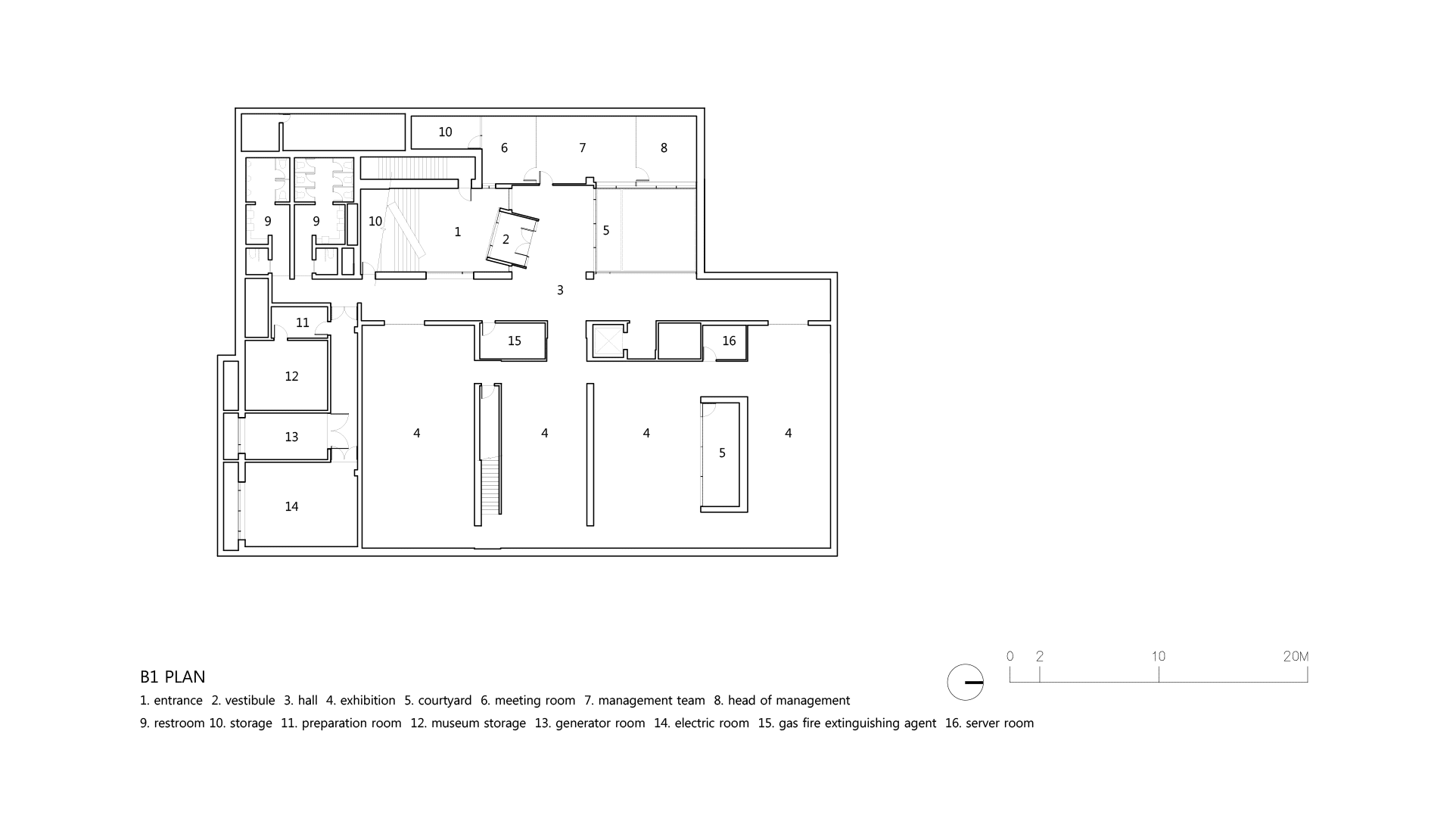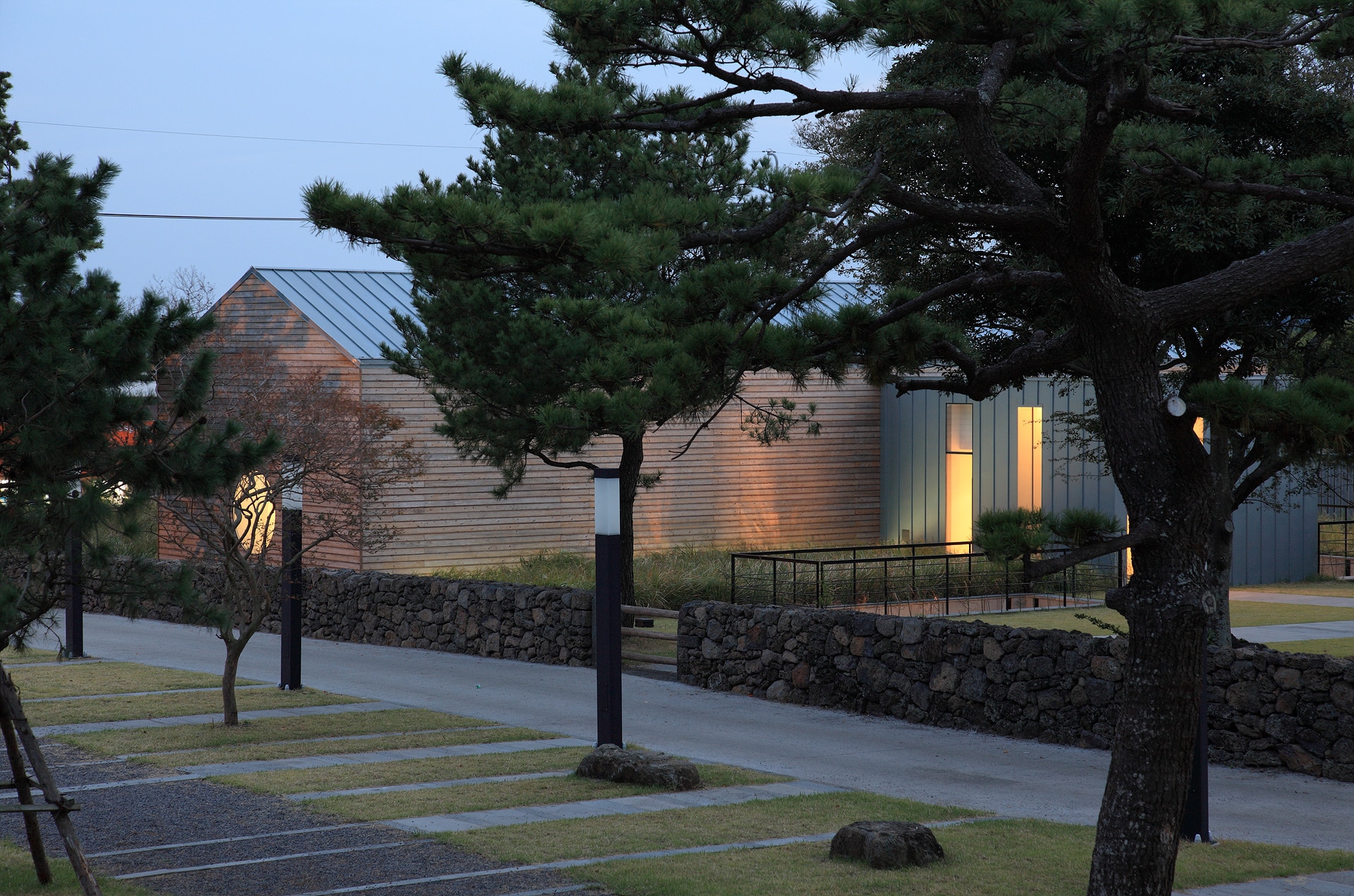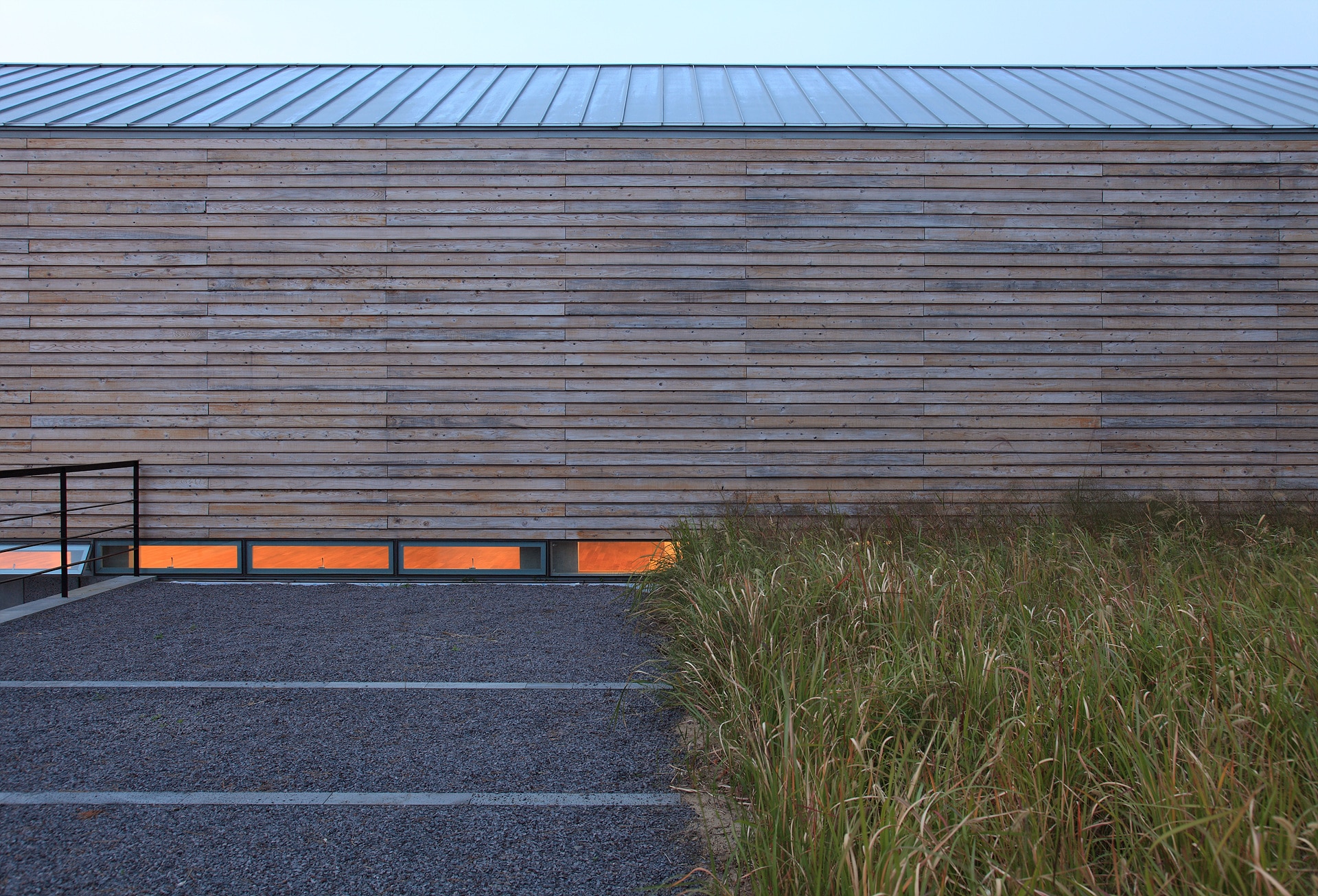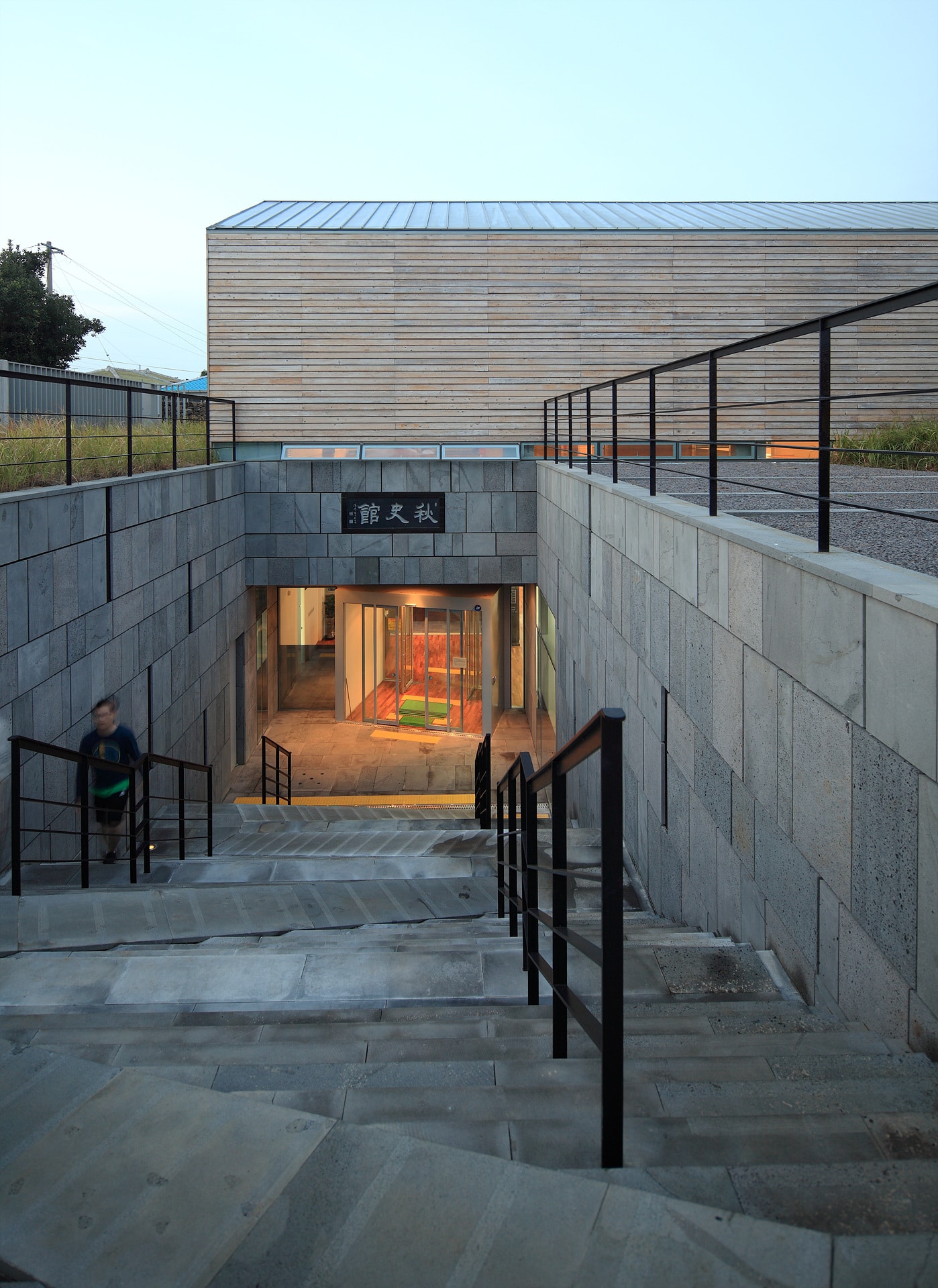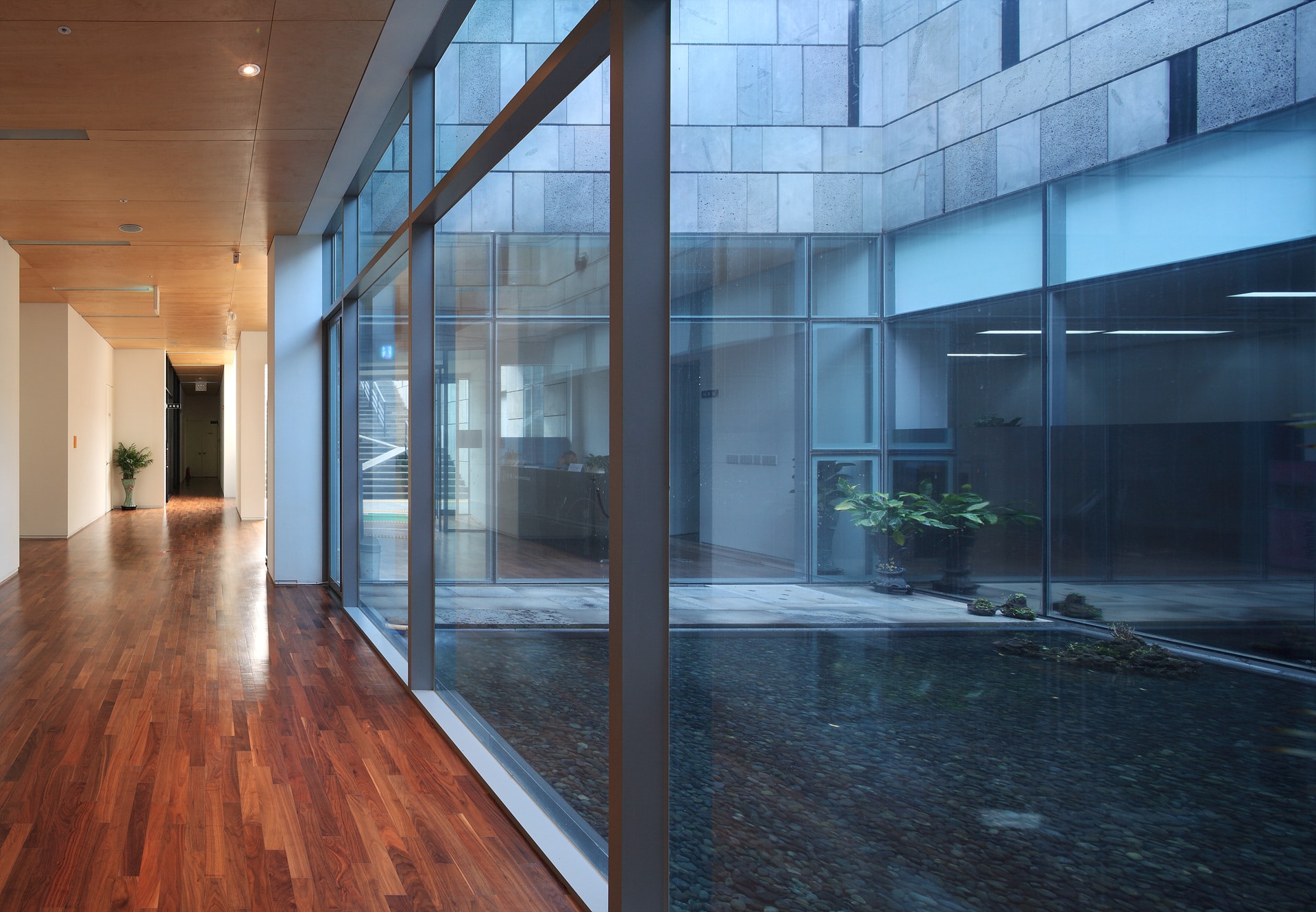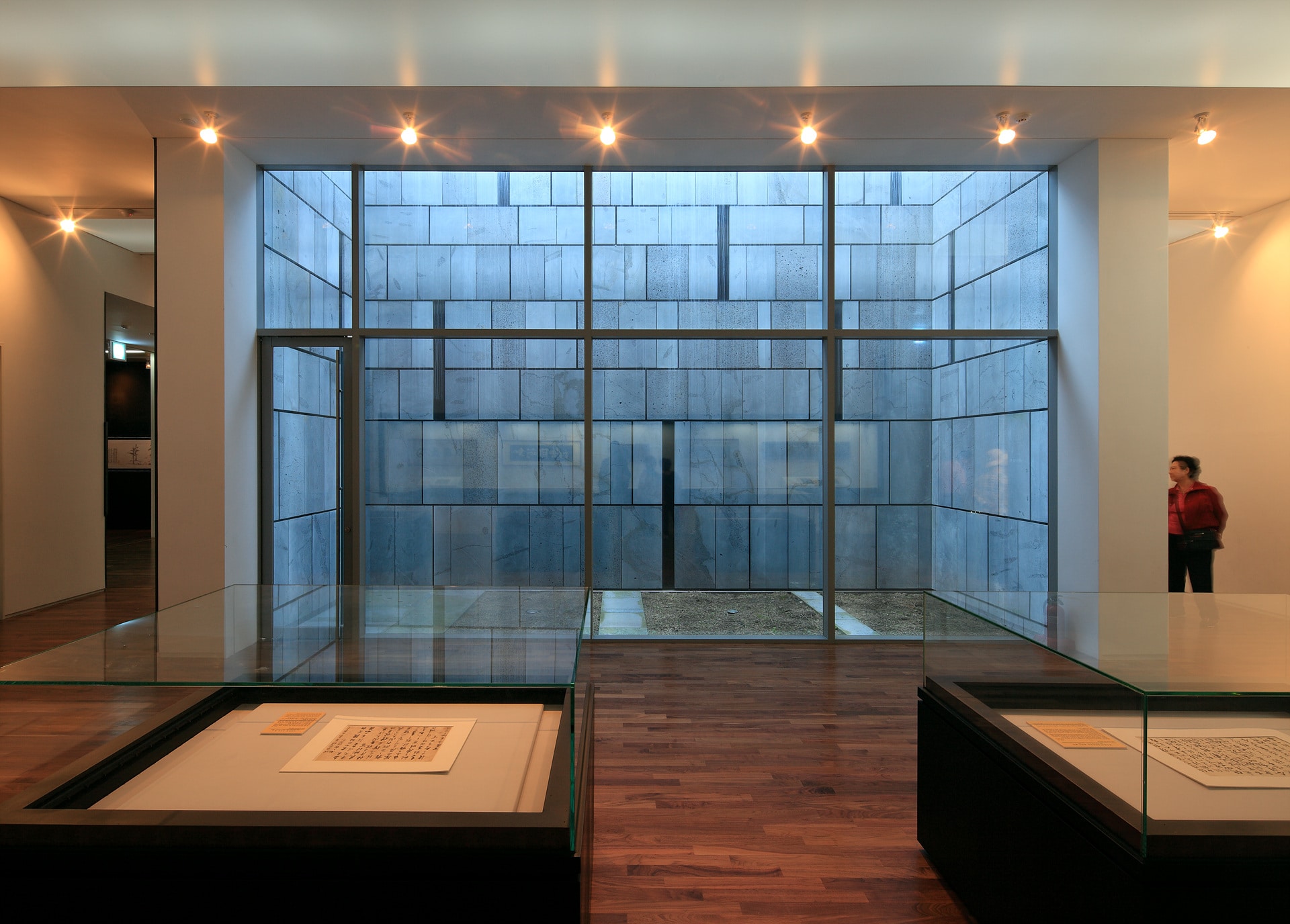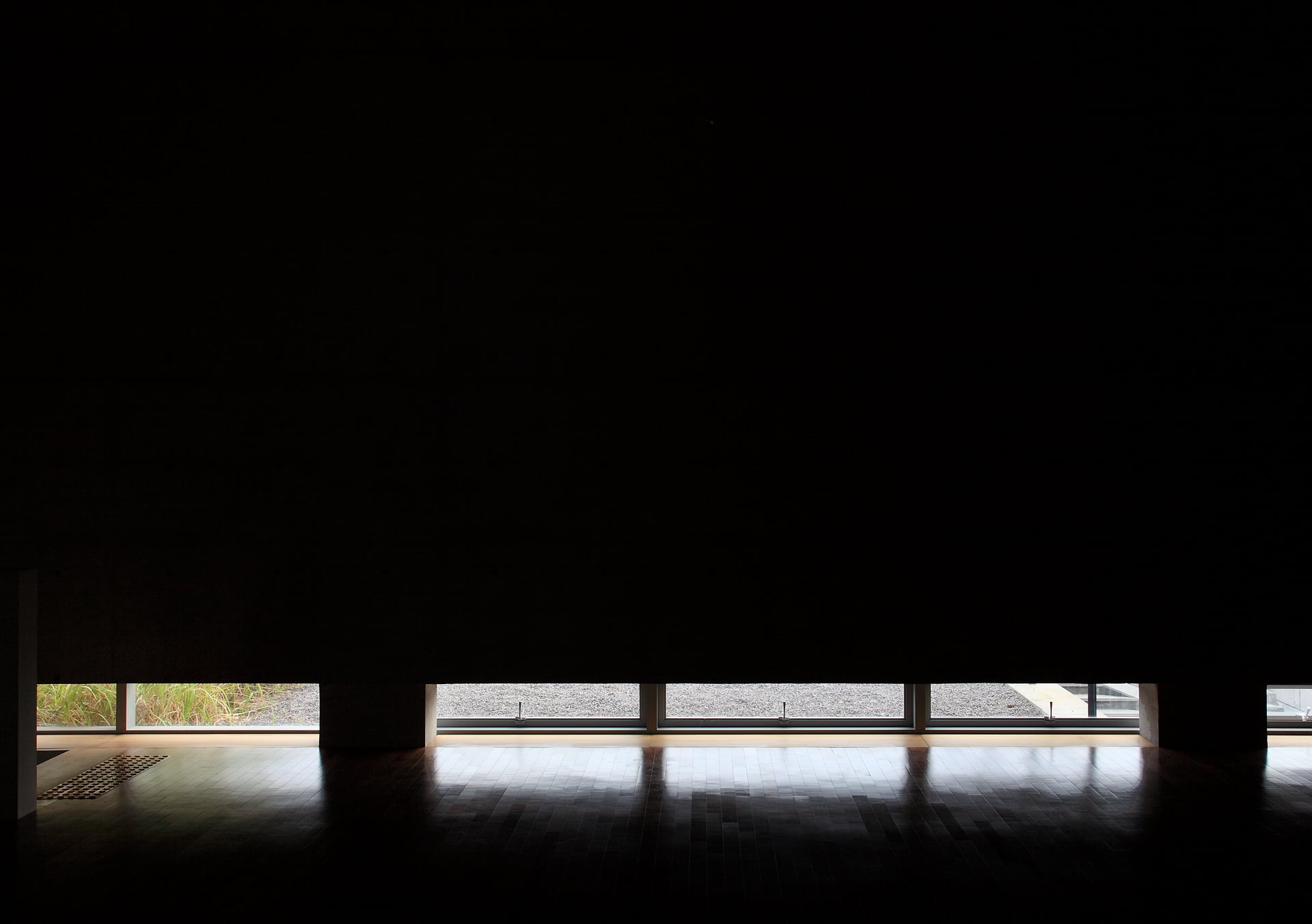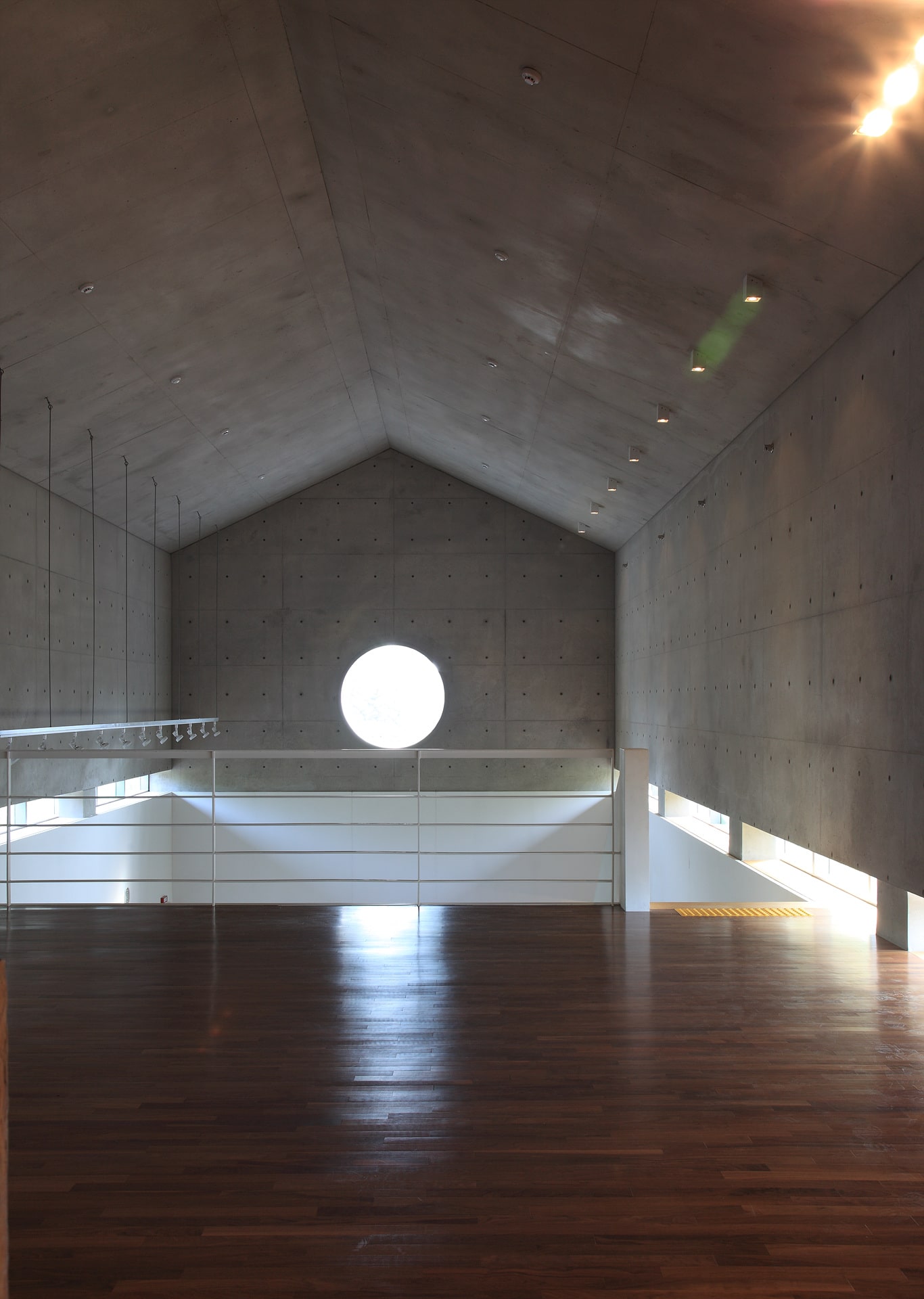Chusa Memorial Museum
| 완공년도 | 2010 |
| 위치 | 제주특별자치도 |
| 대지면적 | 5,245㎡ |
| 건축면적 | 236㎡ |
| 연면적 | 1,191㎡ |
| Structural engineer | 서울구조 |
| Mechanical engineer | 세아엔지니어링 |
| Electrical engineer | 우림 전기 |
| Lighting design | 뉴라이트 |
| 완공년도 | 2010 |
| 위치 | 제주특별자치도 |
| 대지면적 | 5,245㎡ |
| 건축면적 | 236㎡ |
| 연면적 | 1,191㎡ |
| Structural engineer | 서울구조 |
| Mechanical engineer | 세아엔지니어링 |
| Electrical engineer | 우림 전기 |
| Lighting design | 뉴라이트 |
제주도의 아름다운 풍광의 뒤편에는 슬픈 역사가 굵게 새겨져 있다. 이 섬은 수백 년 전부터 육지의 부속영토로서 수탈당해야 했고 이민족 몽골과 일본의 침략은 곳곳에 생채기를 남겼으며 좌우의 이념 갈등이 촉발한 비극은 아직도 얼룩으로 남아 있다. 또한 가장 험한 유형지였던 제주는 유배인들의 한이 일군 유배문화가 깊이 배어 있는 곳이다. 추사(秋史) 김정희(1786-1856)는 그 유배의 중심인물이었다. 조선 말기 최고의 지성이었던 추사는 팔 년간의 제주 유배생활이 던져 준 고독을 통해 자신을 최고의 예술적 경지로 몰아갔다. 송곳으로 찍은 듯한 글씨는 그런 고독의 산물이었다. 그런 그를 기념하는 건축이라면 어설픈 욕망을 모두 제거하며 짓는 게 마땅하다. 더구나 주어진 땅은 대정성벽을 이웃하고 있으며, 성내 마을은 작은 단위의 질박한 가옥들이 집합하여 만든 소담스러운 풍경이다. 지어야 하는 삼백오십 평의 연면적이 여기서는 작은 규모가 아니었다. 자칫하면 모든 균형을 깨뜨릴 게 분명하였다. 보이지 않는 건축을 만드는 게 우선이다. 그래서 지하에 거의 모든 볼륨을 두고 지상에는 이 기념관을 될수록 작고 단순한 건물로 나타나는 것이 온당하였다. 지하의 공간이지만 선큰 마당을 통해 채광과 환기를 가능하게 한다. 전시관람을 다 마치면 위로 뚫린 공간에 다다르는데, 계단을 타고 오르면 모든 것이 비어 침묵만 남은 공간 속에서 추사와 스스로를 대면케 한다. 대단한 건물이 들어설 것을 기대한 주민들은 박공지붕에 나무로 마감되어 나타난 이 흔해 보이는 건축에 실망하여 감자창고라고 빈정댄다고 듣게 되었다. 나는 주민들을 직접 만나 감자창고라는 이름이 내게 자랑스러운 이유를 추사의 삶과 더불어 설명하였다. 이 건축은 감자창고여야 했다.
Behind the beautiful scenery of Jeju Island are deeply-furrowed traces of sad history. The island had to be exploited for hundreds of years as an attached territory of the mainland, and even before that, the invasions by the Japanese left deeply-cut wounds on all over the Island. In the modern era, the tragic events caused by the ideological conflicts between the left and the right political factions still remain as a traumatic experience that cannot be erased. In addition, Jeju which had long been a very tough place of exile in the past, is a place where the culture of exiles who should live with resentment and sorrow, still remains. Kim Jeong-hui (1786-1856, well known as his pen name Chusa) was the central figure of the exile culture. Chusa, who was one of the highly-respected intellectuals during the late part of the Kingdom of Joseon, drove himself to the highest artistic level by sublimating solitude during the eight years of exile in the island. His sharp and powerful calligraphy was the product of such loneliness. Because this was the architecture in commemoration of Chusa, representations of all the sloppy desires should be removed. Moreover, the site was adjacent to the remains of a fortress in Daejeong, and the village in the fortress remains looked plain and simple due to the small and humble houses in the village. The gross floor area of the Chusa Memorial Museum was about 1,200m2, which was rather too large in terms of the surrounding environment. Because of its size, such a relatively big museum would surely fail to keep a balance with the surroundings. First and foremost, it was crucial to make the architectural least visible. It was highly required to place almost all the volumes underground, and make the Museum appear on the ground as small and simple as possible. For the underground space, sunken yards were created to secure lighting and ventilation. When the visitors finish watching the exhibits, they are to reach a space open to the top. Reaching the space walking up the stairs, they encounter a totally empty space where nothing but silence remains. It has been arranged for them to personally meet with Chusa there.


